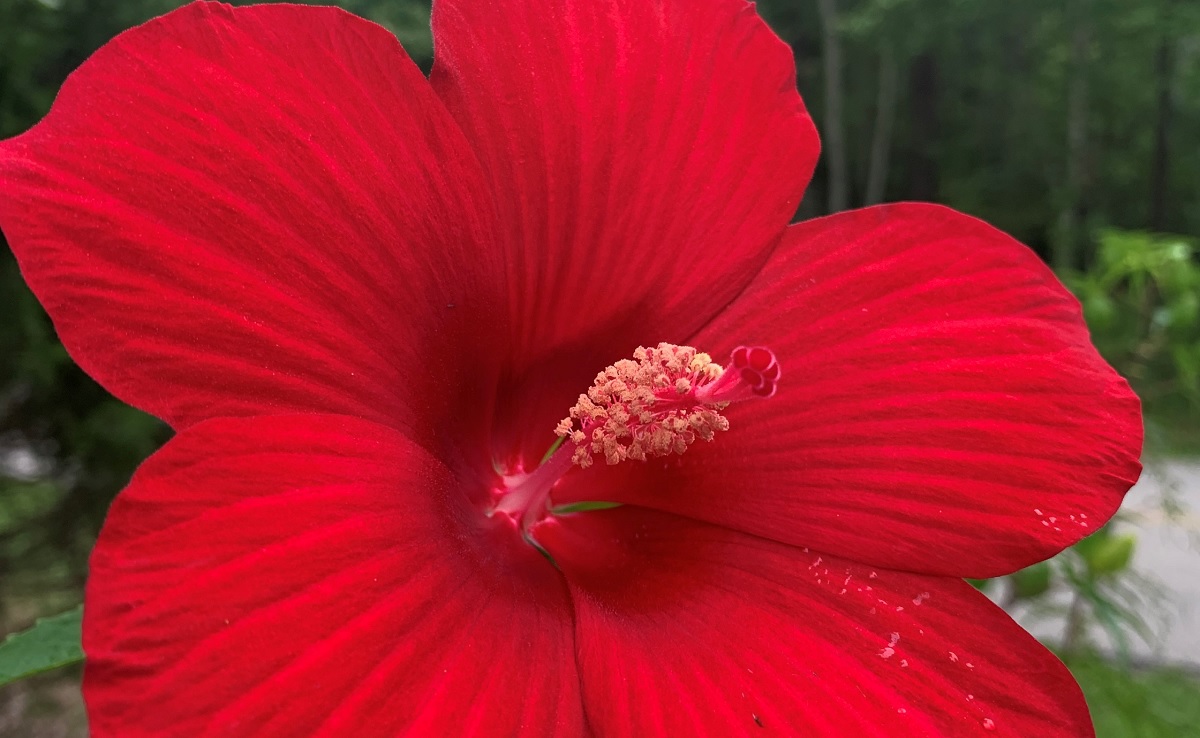
UT Gardens’ August 2021 Plant of the Month
Submitted by Celeste Scott, UT Extension Madison County
Nothing is more refreshing in the droughty heat of summer than spotting a wild stand of Hibiscus coccineus scarlet red blooms towering above the vegetation of ditches and other low-lying areas. With its bright red flowers and preference for moist sites, this plant claims a variety of aptly descriptive common names: Scarlet Rose Mallow, Rose Mallow, Swamp Mallow and Swamp Hibiscus just to name a few. While there are well over 200 species of Hibiscus and innumerous common names associated with each, the Southeastern United States claims several species as native to the region including H. coccineus Scarlet Rose Mallow.
Scarlet Rose Mallow is an herbaceous perennial in USDA Zones 6-11, dying back each winter to the ground and returning from the roots. Published zone recommendations vary, but upon further investigation, we have confirmation of hardiness from plant professionals located in zone 5. While the roots themselves maintain hardiness, the seeds produced are also viable, and under favorable conditions, you may see a few volunteer seedlings.
Valued for its long bloom period, Scarlet Rose Mallow can be seen blooming from July through September or later. Solitary 5-petaled blooms 3-5 inches in diameter spring from the leaf axils in the upper portion of the plant. Its cannabis-like leaves are palmately compound and deeply segmented, and growth habit is upright and airy reaching heights of 5-8 feet. While commonly called Scarlet Rose Mallow, there is also a white form called by many names (White Texas Star, Texas White, Lone Star or Alba) that is equally stunning.
H. coccineus provides optimal bloom display and stronger upright stems if planted in full sun. It prefers moist sites and can even tolerate partial submersion at water’s edge, but moisture is not a requirement. Once established, it can thrive in drier/unirrigated conditions as well. These qualities make it a functional addition to the sustainable landscape concepts of residential rain gardens and downspout gardens, which can have both periods of saturation and drought.
While this plant is certainly practical, it is not lacking in aesthetic design qualities. Its height and open habit make it an ideal addition to the back of borders, and its unique foliage and bright bloom color in combination with other bold textures can create the feel of a tropical oasis. A final attribute to this resilient plant is its resistance to foliar feeding of Japanese beetles, while many of its cousins, like Hardy Hibiscus H. moscheutos and Tropical Hibiscus H. rosa-sinensis, prove to be a tastier treat!
Along with other species of hibiscus, H. coccineus can be found at UT Gardens, Knoxville, in the hibiscus breeding trial plot and the wetland area. UT Gardens, Jackson, also features it in the rain garden demonstration area.
The UT Gardens includes plant collections located in Knoxville, Crossville and Jackson. Designated as the official botanical garden for the State of Tennessee, the collections are part of the UT Institute of Agriculture. The Gardens’ mission is to foster appreciation, education and stewardship of plants through garden displays, educational programs and research trials. The Gardens are open during all seasons and free to the public. For more information, see the Gardens website: utia.tennessee.edu/state-botanical-garden.